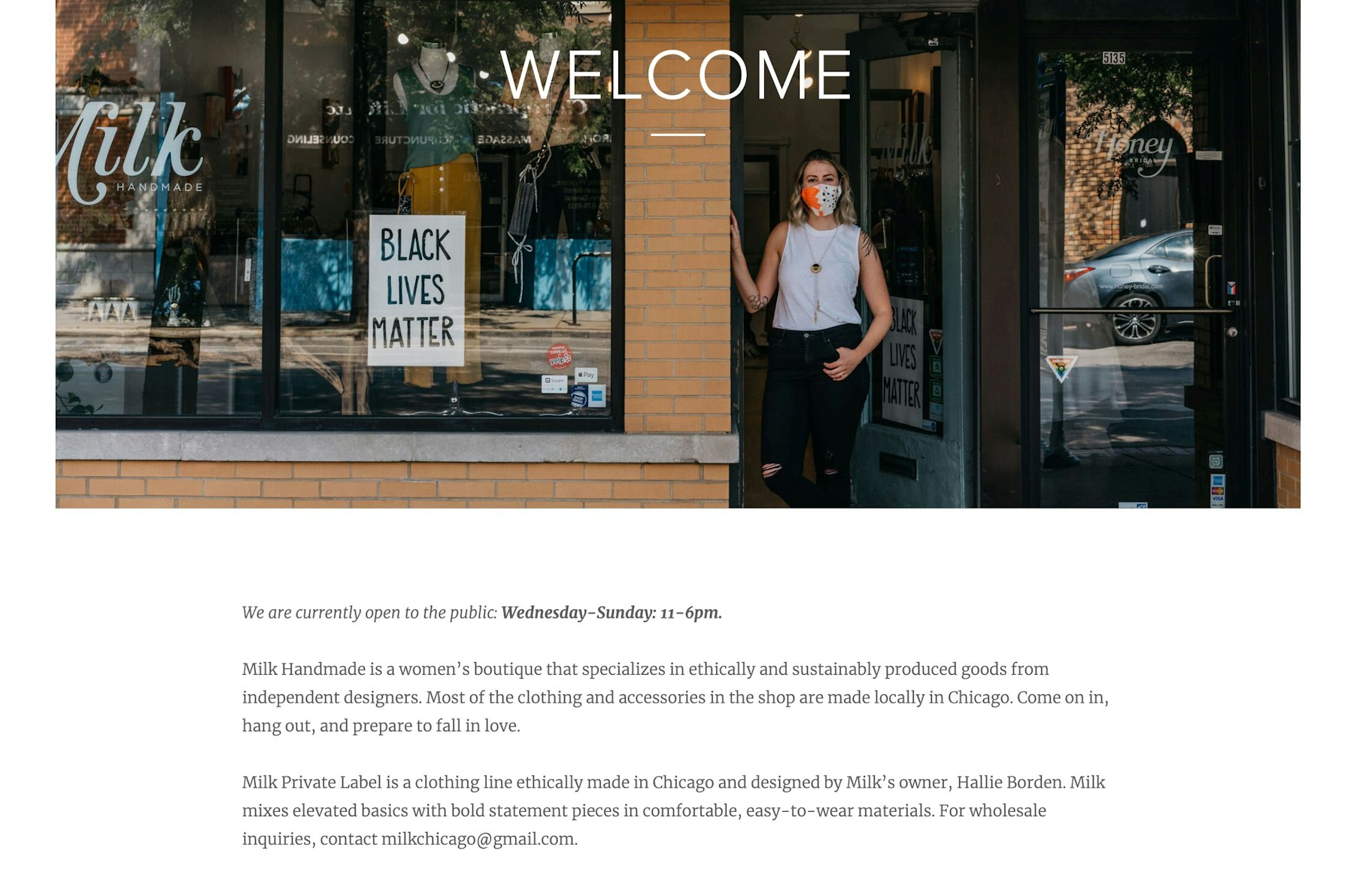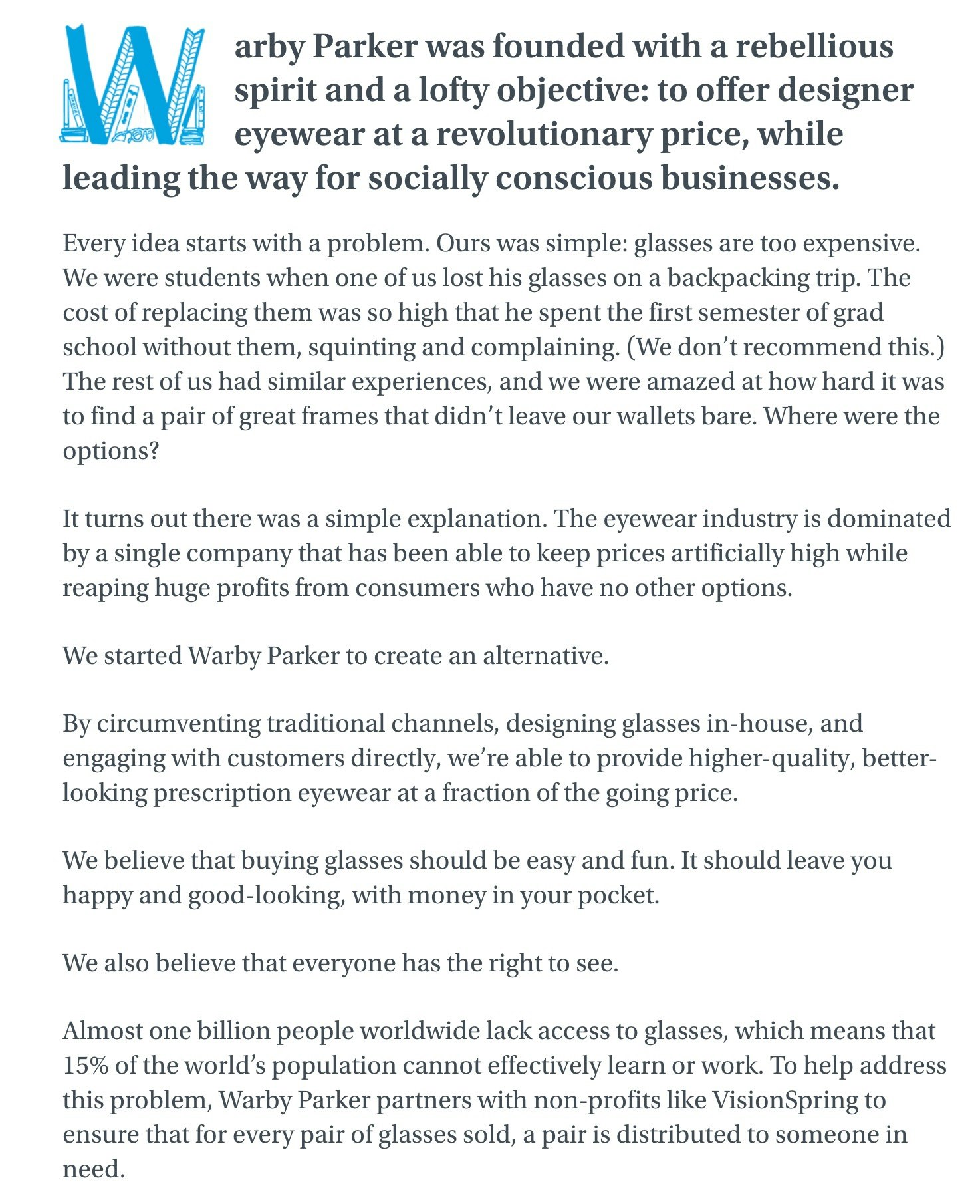Imagine that you have to buy a gift for your chocolate-loving friend. Do you go with Reese’s, or a lower-priced generic product? For me, Reese’s is a no-brainer due to its higher perceived worth as a consumer brand.
A brand is the heart and soul of your company, responsible for influencing audience perception, driving advocates to your organization, and differentiating you from your competition. Unfortunately, many ecommerce entrepreneurs don’t know how to build a brand that attracts people.
After all, building a brand isn’t just choosing a logo or pickling the perfect name. The right brand is the product of various interconnected factors, all designed to change how people think and feel about your business.
Today, we’re going to show you how to create a brand that keeps people coming back, purchase after purchase.


Don’t wait for someone else to do it. Hire yourself and start calling the shots.
What Is a Brand, Anyway?
A brand is a culmination of all the things you use to differentiate your company and gain the attention of a specific target market. This includes not just visual assets, like your website design, logo, brand colors, and business cards, but also your tone of voice, your company mission, values, and more.
If something contributes to how your customers perceive your organization, it’s likely a part of your brand. Let’s look at Apple, for instance. Apple sells computers and technology, just like many other brands. So, what is it about the company that causes customers to line up around the block for a chance of getting one of their latest products? It’s the brand.

Apple’s brand is all about simplicity, innovation, and modernity. The company sets itself apart with a minimalist approach to aesthetics, from the crisp white stores in the real world to the ultra-sleek Apple website.
Apple also builds its brand by:
- Constantly innovating and releasing new products to make customer lives easier.
- Using phrases like “Think Different” to highlight its creativity
- Collaborating with market leaders on influential marketing campaigns
The forward-thinking and creative nature of Apple’s brand is what gets customers excited about the company.
How to Brand Your Business: 8-Step Checklist
Now you know what a brand is, let’s look at how to build one from scratch.
1. Identify Your Audience
When it comes to brand building, it’s important to know who you’re trying to reach.
Think about what kind of products you’ll be selling and who they’ll serve. Try to be specific with your choice of the customer. For instance, instead of targeting “dog owners,” a pet accessories company can focus on new dog owners with younger canine companions or people who train dogs for shows. Choosing a specific niche will mean you have less competition to worry about.
Identifying your audience will help you choose a brand voice, design, and even the right marketing strategy to connect with potential buyers. You can build your knowledge of your audience by:
- Examining existing customers: Do you have any existing buyers, and what do you know about them? What is their age range, where do they come from, and what do they love about your business?
- Looking at your competition: What kind of customers are other companies like you targeting? Are there any underserved portions of the market you can help with your products?
- Creating buyer personas: Imagine what your ideal customer might look like, and create a profile outlining their age, gender, demographics, likes, dislikes, and even their behaviors (such as how they prefer to shop online).
As you begin to build your ecommerce brand, you’ll have new opportunities to learn more about your audience from analytics tools and customer surveys. Adding to your customer personas as you go will help to keep them accurate.
2. Develop Your Brand Position
Developing a certain depth of knowledge about your target audience will also give you an insight into your brand position. You can’t be a high-end luxury fashion company and a budget-friendly business at the same time. You need to decide where you’re going to enter the market.
The easiest way to do this is to build a positioning statement. This is one or two lines you can use to help establish who you are and what you’re doing. For instance, your brand position statement might be: “We’re a home accessories company selling unique hand-made products to customers in [region].”
When establishing your brand position, think about how you will differentiate your business from others. In the example above, the main differentiator is the “hand-made” aspect of the products. When you know your position and selling points, you can begin creating marketing campaigns and branded content that speaks to your target audience in the right voice.
For instance, a company selling hand-made products is more likely to have a warm, welcoming voice. Here’s an example:

In contrast, a company selling high-end luxury products should use a more artistic and sophisticated voice.
3. Pick a Business Name
You know your target audience and how you want to position your brand. Now it’s time to pick that all-important brand name.
This is one of the most important defining features of your brand. The right name should distill everything your customer needs to know about you into a single word.
For example, if you’re a clothing business committed to designing something new for your customers, you might make up a word, like “Vision Clothing.” The key to success will be picking a memorable word with sounds that convey the right emotions or ideas to your audience.
Other kinds of names include:
- Descriptive names: Titles that describe the business, like “Florist.”
- Emotive names: Names that inspire emotional responses, like “Innocent Drinks.”
- Origin names: Names chosen for where the business began or who made it, like “Ford.”
- Compound names: Titles that combine words, like “Facebook” or “FedEx.”
- Initials and acronyms: Easy to remember versions of longer names, like “BMW.”
As your brand name will also define the URL/domain of your online store, be sure to do some research to see what’s available before deciding on a name. Check out our guide to choosing a perfect name for your store or use these business name generators to get some brand name ideas.
4. Outline Your Brand’s Story
Your brand’s story is essentially the “why” behind your organization. All businesses need to have a purpose (beyond simply making money). Think about why you set up a business and how your products can positively impact people’s lives.
For instance, eyewear brand Warby Parker is built on the desire to deliver high-quality eyeglasses to customers worldwide for a reasonable price.
The company tells its story on its website about how it found a new way to serve customers by avoiding conventional channels. Engaging with customers via direct online channels allowed it to offer good quality eyewear at a fraction of the going costs.

The narrative identifies Warby Parker as a customer-first brand while outlining its commitment to providing customers with affordable fashion.
A good story can prompt customers to fall in love with your business and generate respect for your brand.
5. Establish Your Brand’s Look
Establishing your brand’s look means deciding how you’re going to help customers identify your company at a glance. For instance, what kind of packaging are you going to be using for your products? How will your customers identify your parcel when they order items from your ecommerce store? What will they see when they navigate your website and look for products?
Some of the most important elements of your brand look include:
- Brand colors: Your brand colors are a handful of shades you’ll use on all of your branded assets, including your website, emails, and product packaging. Colors can have a psychological impact on customers. For instance, red is bold and passionate, while blue is trustworthy and relaxing.
- Fonts: Like your brand colors, your chosen fonts can make a huge impact on how your customers see your brand. Sans-serif fonts are often more modern and friendly, while serif fonts are traditional and authoritative.
- Imagery: What kind of images, illustrations, and pictures do you use on your products, website, and advertisements?
Once you have the various elements you need to build your brand image, create a set of visual guidelines to help inform your team and any designers you work with.
6. Create a Logo
Your logo is another major element in learning how to start your own brand. Alongside your name, your logo will be one of the first things your customers recognize in your brand.
An excellent logo should be meaningful and easy to understand. Apple’s iconic apple image with the bite taken out of it doesn’t require any explanation. The best way to ensure your logo has the right impact is to work with a professional designer to help capture your visual essence.
A designer will be able to talk you through the different kinds of logos you can consider, such as:
- Brand emblems: A brand emblem is an image placed in a circle or shield in most cases. A great example is the Starbucks logo. Emblems have a sophisticated and traditional look.
- Mascot logos: Mascot logos often center around a specific character, like Wendy’s logo. They can help to humanize a business with a unique face.
- Letter marks: Letter marks transform an acronym name into a visual logo. The IBM logo is an excellent example of this.
- Icon: Icon logos use a simple image as an identifier, like the Twitter bird. They’re great for bringing a memorable visual to your brand image.
- Wordmarks: Wordmarks use a stylistic font to transform your brand name into your logo. These logos are excellent for making your name more memorable.
- Combination marks: Combination logos bring the name of the company and an image together, like the Taco Bell logo, for instance.
Check out our post on the best free logo makers as you consider creating your brand’s logo.
7. Write Your Slogan
While a slogan is an optional part of the brand-building process, it’s one well worth considering if you want to improve your brand reach and recognition. A slogan helps your customers understand your company and what it does.
The kind of slogan you use will depend on what you want to accomplish. Redbull uses the metaphor “Redbull gives you wings” to tell people they can enhance their energy with the drink. Nike uses “Just do it” to show off its motivational brand attitude. The best slogan will tell your audience something they need to know about your business while giving you another unique element to add to your identity.
When learning how to build your brand with a slogan, remember to use your unique brand voice to make your statement stand out.
8. Integrate Your Brand Everywhere
Now that you’ve built your brand, you need to share it.
Businesses need to show their brand in everything they do to make them memorable. The easiest way to do this is to start by building a style guide for your employees and contractors. Make sure everyone on your team knows what your brand should look and sound like.
Next, think about how you can draw attention to your brand on various channels. For instance, your brand should be evident on your:
- Ecommerce store: Choose a store theme that’s perfect for your brand identity and implement your company colors. Remember to showcase your logo on every page and highlight your brand voice in your website content.
- Social media: Social media is an excellent tool for building awareness for your brand. You can share posts that highlight your personality, post pictures and graphics representing your brand, and even encourage people to share your brand with their friends and colleagues.
- Marketing campaigns: Your brand should be clearly visible in every marketing campaign, whether you’re sending out email newsletters or connecting with customers via podcasts. Make sure every advertising effort demonstrates your brand image and voice consistently.
Consistency is crucial when developing a strong brand. The more consistent you can be with your brand identity online and offline, the more familiar your company will feel to your audience. Consistency also helps your brand appear more stable and reliable.

Conclusion
A strong brand is a must-have for any business in today’s competitive world.
Without the right branding, you can’t connect with your customers on an emotional level. This means that any customer will abandon your organization as soon as they find another ecommerce store they can resonate with.
Building your brand identity gives your customers something to truly connect with. It’s what keeps people coming back for more, sets you apart from the competition, and turns one-time clients into dedicated brand advocates.
Never underestimate the importance of building a brand.
Summary: How to Build a Brand from Scratch in 2021
- Identify your target audience
- Develop your brand position
- Choose a business name
- Share your brand’s story
- Establish your brand’s look
- Create a logo
- Write your slogan
- Integrate your brand everywhere
Want to Learn More?
- Bootstrapping a Business: 10 Tips to Help You Succeed
- The Ultimate List of Small Business Software & Tools
- Top 50 Ecommerce Resources to Grow Your Business
- 10 Vital Strategies to Use When Marketing to Generation Z




